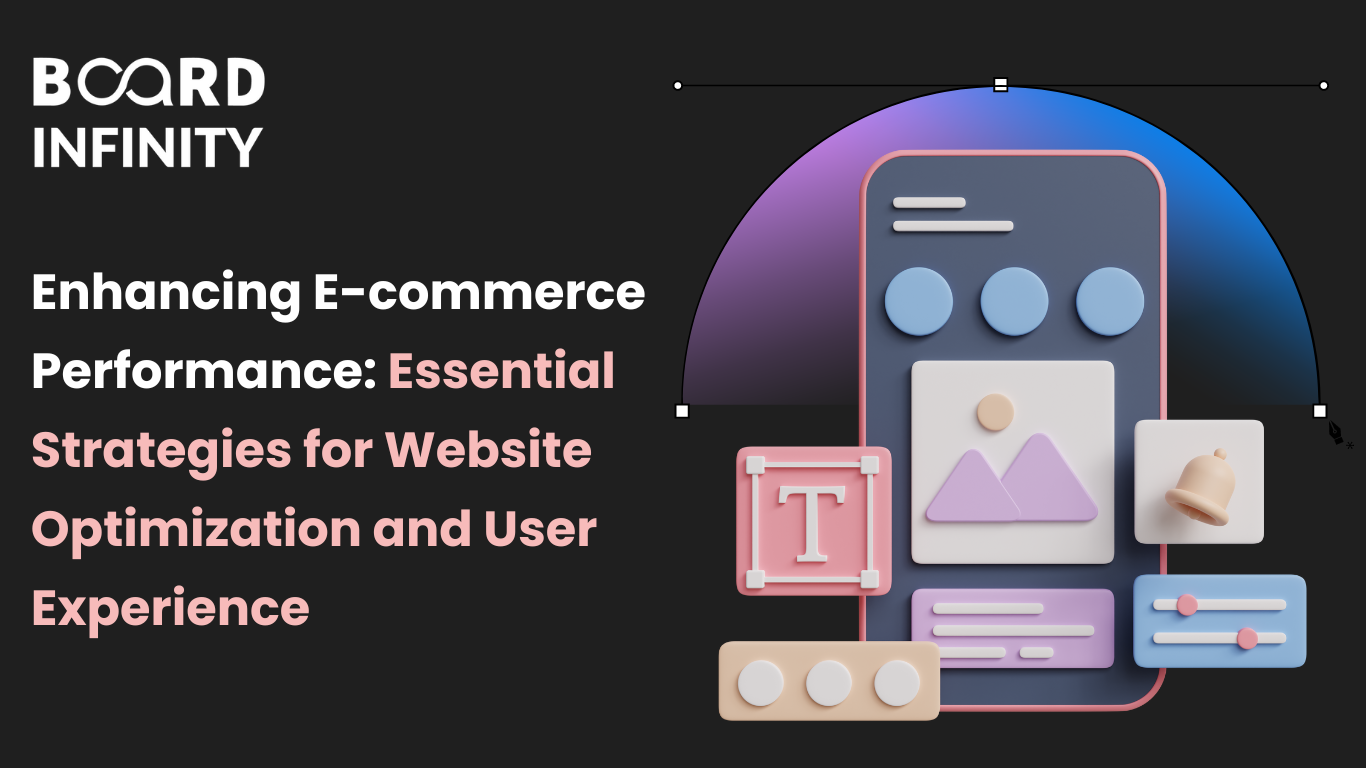Enhancing E-commerce Performance: Essential Strategies for Website Optimization and User Experience

The dynamic world of e-commerce will find that a website's performance and user experience (UX) can make or break a business. Online shoppers expect fast, responsive, and user-friendly websites. A site that loads slowly, is difficult to navigate, or fails to provide a seamless shopping experience can quickly drive customers away.
This article will delve into aspects of optimizing e-commerce websites for superior performance and UX. From technical enhancements to design improvements, these strategies are pivotal in creating a successful online store that attracts customers and retains them.
1. Speed Optimization: The Fast Track to Customer Satisfaction
Website speed is a non-negotiable aspect of e-commerce success. Statistics show that a delay of even a few seconds in page loading can significantly increase bounce rates and reduce customer satisfaction. Start by optimizing images and videos, ensuring they are compressed without losing quality. Leverage browser caching, minimize HTTP requests, and use a content delivery network (CDN) to speed up content distribution. Additionally, regularly monitor your site’s speed using tools like Google PageSpeed Insights. Remember, in the fast-paced digital world, speed isn’t just a luxury; it's a necessity for keeping your customers engaged and your conversion rates high.
2. Mobile-First Design: Catering to the Smartphone Shopper
As the majority of users access the web via mobile devices, a mobile-first design for your e-commerce site is crucial. This approach means designing your site for small screens first and then scaling up for larger screens. A mobile-first website should feature a responsive design, easy-to-click buttons, and simplified menus. Ensure that text is readable without zooming, images are optimized for mobile, and that the checkout process is streamlined for smartphone users. Failing to deliver a functioning and responsive product to mobile users will significantly lose potential sales.
3. Navigational Clarity: Guiding Customers with Intuitive Design
An intuitive navigation structure is fundamental for a positive UX. Clear menus, well-organized categories, and a search bar are key elements. Breadcrumbs, which show the path taken from the home page to the current page, enhance navigability. For larger e-commerce sites, implementing an advanced search function with filters can significantly improve the shopping experience. Remember, if customers can’t find what they’re looking for quickly and easily, they’re likely to take their business elsewhere.
4. Personalization: Crafting a Unique Shopping Experience
Personalization in e-commerce is no longer just an option; it’s a competitive necessity. Use customer data to personalize the shopping experience. This could mean product recommendations based on browsing history, personalized email marketing, or tailored offers. Advanced AI algorithms can automate much of this personalization, ensuring that each customer feels uniquely catered to. Personalization not only enhances the user experience but also boosts loyalty and sales.
5. Security and Trustworthiness: Building Customer Confidence
In the world of e-commerce, security is paramount. As a baseline measure, you must ensure that your website is equipped with Secure Socket Layer (SSL) certificates to encrypt data. Display security badges clearly and provide transparent information about privacy policies and payment security. Providing secure and varied payment options adds to the trustworthiness. Remember, a secure shopping environment is crucial for building customer trust and encouraging repeat business.
6. Utilizing Professional Help for Specialized Platform Development
While many aspects of e-commerce optimization can be handled in-house, certain specialized tasks, particularly when dealing with specific platform developments, may require professional expertise. Hiring outside help to develop intricate features or tailoring your site to specific e-commerce platforms can be a wise investment. These experts can offer advanced solutions for optimization challenges and ensure that your website stands out in a crowded market.
7. Leveraging E-commerce Tools for Efficiency
A well-optimized e-commerce website is powered by the right ecommerce tools. These tools help automate tasks like inventory management, customer support, and marketing, ensuring a seamless operational workflow. From AI-driven chatbots to advanced analytics dashboards, investing in the right set of tools can significantly enhance your website’s performance and user experience.
8. Continuous Testing and Feedback: The Key to Ongoing Improvement
Optimizing an e-commerce site is a forever process - if you become complacent, you are already falling behind. Regularly test different aspects of your website, from loading speed to checkout ease. Utilizing A/B testing will help you understand what works best for your audience. Encourage and monitor customer feedback to gain insights into user experience and potential areas for improvement. Continuous testing and adaptation ensure that your e-commerce site remains up-to-date with current trends and user expectations.
Conclusion
Optimizing your e-commerce website for enhanced performance and user experience is multifaceted. It requires a focus on speed, mobile responsiveness, intuitive navigation, personalization, security, and continuous improvement. While leveraging in-house skills is valuable, don’t hesitate to seek specialized external expertise when necessary, particularly for unique platform-specific developments. With the implementation of these strategies, you can create a powerful online presence that attracts customers, fosters loyalty, and increases sales. Remember, in the competitive world of e-commerce, a well-optimized website is not just an asset; it's a necessity for business growth and ongoing customer satisfaction.
